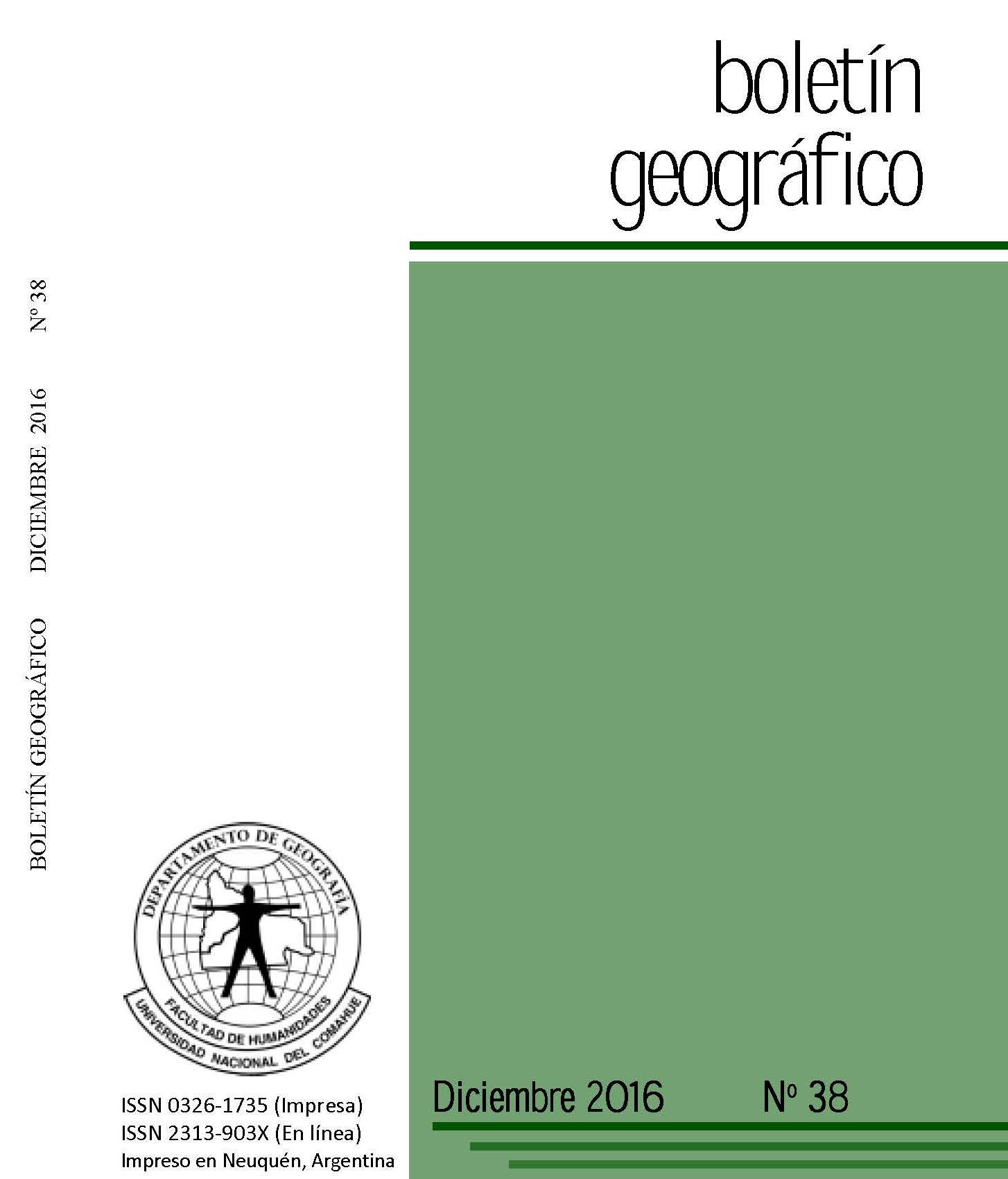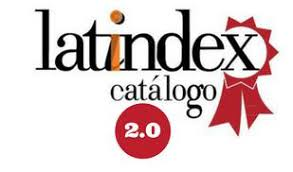Development planning in argentina. An agenda for progress and open challenges (2003-2015)
Keywords:
development planning, public policy, regional and sectoral approach, neo-structuralismAbstract
This paper attempts to analyze the conceptual trends that have been influencing national public policies related to regional and sectoral planning directed from the driving state to the period 2003-2015. In particular, a study assessing the conceptual planning from a neo-structuralist perspective arises. To this end, national policies are systematized with regional and sectoral orientation. Since the mid-2000s, the pace of recovery of state regulation, the regional issue has emerged again as an issue in the agenda of public policies. In the period 2003-2015 it has operated a crystallization of new impetus to the development of regional economies. It has tried variety of instruments that can partially sustain the legacy of planning but have also incorporated new aspects (e.g. promotion of social economy, self-management and family farm, guidance and impetus to the demand for grassroots and media, etc.). In
this historical context, questions have again become relevant to public management what, who, how, how much and where it occurs, and which means of distribution and accumulation are. Overall, regional and sectoral development policies have been characterized by dispersion and overlapping entities understood in the art. Identified between middle of the first and second decade of the century, they seem to be due to a "settling" of public regulation instruments that have managed persistence (adapted, re-routed) beyond the historical moments that gave rise to them. It has prevailed inertial one, scarcely transformative of power relations inherited from the late twentieth century reformist logic, however situation has allowed the strengthening of the planning functions. Moreover, it is clear that multiple instruments tend to build objects which usually overlap and even interfere. They seem to have arisen by
circumstantial situations more product state planning, a situation that disputes the fact whether state inspiration as a whole has been neo-structuralist or more basically oriented to promoting aggregate demand. In any case, Argentina has built its own way a number of instruments of regional and sectoral focus of neo-structuralist inspiration. In this context, public policies outlined here would tend to boost demand centrally, without the possibility of transforming the unbalanced production structure inherited from the previous but attentive to your temporal becoming decades.
Downloads
References
ASTARITA, R. (2006) “Neo-schumpeterianos y marxismo. Breves notas de clase sobre las diferencias entre estas corrientes”. Disponible en http://rolandoastarita.com/ncSchumpeterianosyMarx.htm
BARUJ, G. y PORTA, F. (2006) Políticas de competitividad en la Argentina y su impacto sobre la profundización del Mercosur. Comisión Económica para América Latina y el Caribe, Santiago.
BASUALDO. E. (2005) “La reestructuración de la economía argentina durante las últimas décadas. De la sustitución de importaciones a la valorización financiera” En: Basualdo, E., Arceo, E. (Comp.) Neoliberalismo y sectores dominantes. Tendencias globales y experiencias nacionales. CLACSO. Buenos Aires.
BASUALDO, E. (2015) Deuda externa, fuga de capitales y restricción externa. Desde la última dictadura militar hasta la actualidad. En Documento de Trabajo del CEFIDAR, 68, 1-90.
BOISIER, S. (1993) Las transformaciones en el pensamiento regionalista latinoamericano. Escenas, discursos y actores. En Documentos del ILPES, 7, 1-49.
CORAGGIO, J.L. (1997) “Perspectivas del desarrollo regional en América Latina.” Trabajo presentado en III Seminario Internacional: Estado, Región y Sociedad Emergente, Recife.
CURBELO, J.L. (1990) La crisis de la planificación regional convencional. En Documentos del ILPES, 9, 15-27.
DE MATTOS, C. (1979) Planes versus planificación en la experiencia latinoamericana. En Revista de la Cepal, 79-96.
ESTEVA, G. (2000) “Desarrollo”. En Viola, A. (comp.) Antropología del desarrollo. Teoría y estudios etnográficos en América Latina. Paidós. Barcelona.
FFRENCH DAVIS, R. (2015) Neoestructuralismo y macroeconomia para el desarrollo. En Barcena, A. y Prado, A. (Ed.) Neo-estructuralismo y corrientes heterodoxas en América Latina y el Caribe a inicios del siglo XXI. CEPAL. Santiago.
GAGGERO, A; SCHORR, M. y WAINER, A. (2014) Restricción eterna: el poder económico durante el kirchnerismo. Futuro Anterior. Buenos Aires.
GAGGERO, J. y LIBMAN, E. (2007) La inversión y su promoción fiscal (Argentina, 1974-2006). En Documentos de Trabajo de CEFIDAR, 15, 1-124.
GARCIA, A. (2014) Espacio y poder en las políticas de desarrollo del Siglo XXI.CEUR-CONICET, Buenos Aires, 440 pp.
GARCÍA, A. y ROFMAN, A. (2012) Planificación regional: recuperación y desafíos para la agenda pública de Argentina. En Ensayos de Economía, 39, 61-80. INDEC (2015). Tasa de desempleo. Encuesta Permanente de Hogares, Buenos Aires.
KOSACOFF, B. y AZPIAZU, D. (1989) La industria argentina: desarrollo y cambios estructurales. Centro Editor para América Latina, Buenos Aires, 113 pág.
LAVARELLO, P. (2015) El gradual regreso de la política industrial: definición, avances y desafíos para la Argentina. En Revista FIDE, 361, 21-23.
LECHNER, N. (1981) Acerca del ordenamiento de la vida social por medio de Estado. En Revista Mexicana de Sociología, 43, 1079-1102.
LOBATO CORREA, R. (2000) Região e Organização Espacial. Editora Ática, San Pablo, 51 pp.
LOVE, J. L. (1994) Economic ideas and ideologies in Latin America since 1930. En Bethel, L (comp.) The Cambridge History of Latin America, 6, 393-460.
MINISTERIO DE AGRICULTURA, GANADERÍA Y PESCA (2015). Programas Vigentes. Disponible en: http://www.minagri.gob.ar/site/desarrollo_rural/institucional/03_Programas_Vigentes/index.php
MINISTERIO DE ECONOMÍA Y FINANZAS PÚBLICAS (2009). Fondo Federal Solidario. Disponible en:
http://www2.mecon.gov.ar/hacienda/ssrp/normativa/dec_206_09.pdf
MINISTERIO DE ECONOMÍA Y FINANZAS PÚBLICAS (2015). Programa de Estímulo al pequeño productor de granos (PEPPG-MECON) y Régimen de Recomposición del Pequeño Productor Lechero (RRPP lechero-MECON). Buenos Aires.
MINISTERIO DE INDUSTRIA (2013). Guía 2013. Programas y beneficios para la industria argentina. Buenos Aires.
MINISTERIO DE PLANIFICACIÓN FEDERAL (2015). Plan Estratégico Territorial. Buenos Aires.
OSZLAK, O. (1997) Estado y sociedad: ¿Nuevas reglas de juego? En Revista Reforma y Democracia, 9 1-37.
PÉREZ CALDENTEY, E. (2015). Una coyuntura propicia para reflexionar sobre los espacios para el debate y el dialogo entre el (neo) estructuralismo y las corrientes heterodoxas. En Barcena, A. y Prado, A. (Ed.) Neo-estructuralismo y corrientes heterodoxas en América Latina y el Caribe a inicios del siglo XXI. CEPAL. Santiago.
PORTA, F. (2015) Trayectorias de cambio estructural y enfoques de política industrial: una propuesta a partir del caso argentino. En Barcena, A. y Prado, A. (Ed.) Neo-estructuralismo y corrientes heterodoxas en América Latina y el Caribe a inicios del siglo XXI. CEPAL. Santiago.
ROFMAN, A (1982) Desigualdades regionales y políticas de desarrollo regional en América Latina. En Cuadernos del CEUR, 7, Buenos Aires, 163 pp.
RUÍZ LÓPEZ, D. y CÁDENAS AYALA, C. (2004). “¿Qué es una política pública?” En IUS. Revista Jurídica, 5, 1-5.
SCHVARZER, J. (1987) Promoción industrial en Argentina. Características, evolución y resultados. En Documentos del Centro de Investigaciones Sociales sobre el Estado y la Administración, 90, 1-70.
Downloads
Published
How to Cite
Issue
Section
License
Copyright (c) 2016 Boletin GeográficoTransfer of rights and data processing
The acceptance of an article for publication in the Journal Geographic Bulletin implies the cession of the rights of printing and reproduction, by any means and means, of the author in favor of the Department of Geography of the National University of Comahue, which will not reject any request reasonable for the authors to obtain permission to reproduce their contributions. The total or partial reproduction of the works published in the Geographic Bulletin must be done citing the origin, otherwise, the copyright is violated.
Likewise, it is understood that the concepts and opinions expressed in each work are the sole responsibility of the author, without being responsible or in solidarity, necessarily, neither the editorial staff nor the editorial staff.
It is the responsibility of the authors to be able to provide interested readers with copies of the raw data, procedure manuals, scores and, in general, relevant experimental material.
Likewise, the Management of the journal guarantees the appropriate treatment of personal data
COPYRIGHT TRANSFER FORM

















 Journal of the
Journal of the 